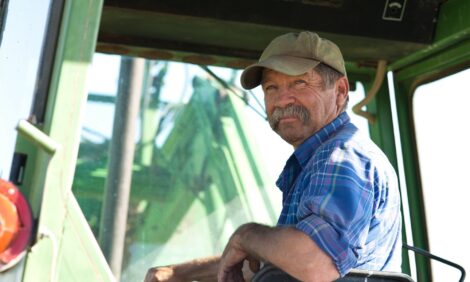



Achieving High Productivity Under Group-housing Systems
UK - In many countries throughout the world pig producers are coming under increasing pressure to house their pigs under welfare-friendly systems. Much of this has focussed on the sow.Britain unilaterally banned the use of gestation stalls over 10 years ago and the EU introduced a Europe-wide partial ban on their use when it introduced legislation at the beginning of 2013.

The United States has not legislated against their use, but powerful corporations and influential fast-food groups have flagged up their intentions in the future to source their pork only from farms not employing such systems.
These moves are seen as a response to increasing consumer interest in how their food is produced and that fact that suppliers, such as supermarkets and restaurants want to reassure their customers.
But this situation has left many North American pig producers worried. Will they be able to introduce group-housing systems without productivity suffering and will they be able to manage sows in groups without encountering problems from aggression?

International pig-breeding company ACMC Ltd, based in Yorkshire, England, has words of reassurance on both these counts. It has achieved remarkable result in group-housing systems both on its own farms in Britain and in Europe, notably in Spain.
“The move to group-housing systems doesn’t have to mean a drop in herd productivity, says Matthew Curtis, the company’s managing director. “Much depends upon the temperament of the sows.”
Over a period of 20 years ACMC has developed a unique F1 hybrid gilt – the AC1. It contains genes from the Chinese Meishan breed which is both naturally docile and highly productive. These genes were used to produce an entirely new, registered, purebred breed, the Meidam, a damline that is used to produce the parent gilt. The sows can produce up to 30 pigs annually and, because they produce 15 per cent more milk than conventional European lines and have 16 functioning teats, they can rear them, too, he points out.
However, a major spin-off not anticipated 20 years ago, was the docility inherited by the AC1 and this has proved invaluable in group-housing systems. “This quiet temperament means the sows are well adapted to such systems and make management a whole lot easier. This, in turn, enhances productivity,” said Matthew.

These are not simply idle claims – they can be backed up by practical experience in the field – nowhere more so than in Spain. On a farm near Valencia, which is already compliant with the new regulations, a 1000-sow herd belonging to the Taroncher brothers has been achieving 32.5 pigs weaned per sow per year. Apart from their inbuilt prolificacy, this is put down to the fact that their docility results in less stress, reduced foetal deaths and abortions.
Another farmer, Alfredo Galindo, who runs a 700-sow commercial herd – part of Sat 322 a large-scale 10,000-sow integrated company – gained a ‘Golden Pig Award’ sponsored by the Spanish Institute for Investigation and Agri-food Technologies for consistently achieving a 92 per cent farrowing rate, again using a housing system compliant with the 2013 regulations.
“These examples show the importance of sow docility, especially on large-scale units,” said Matthew Curtis






